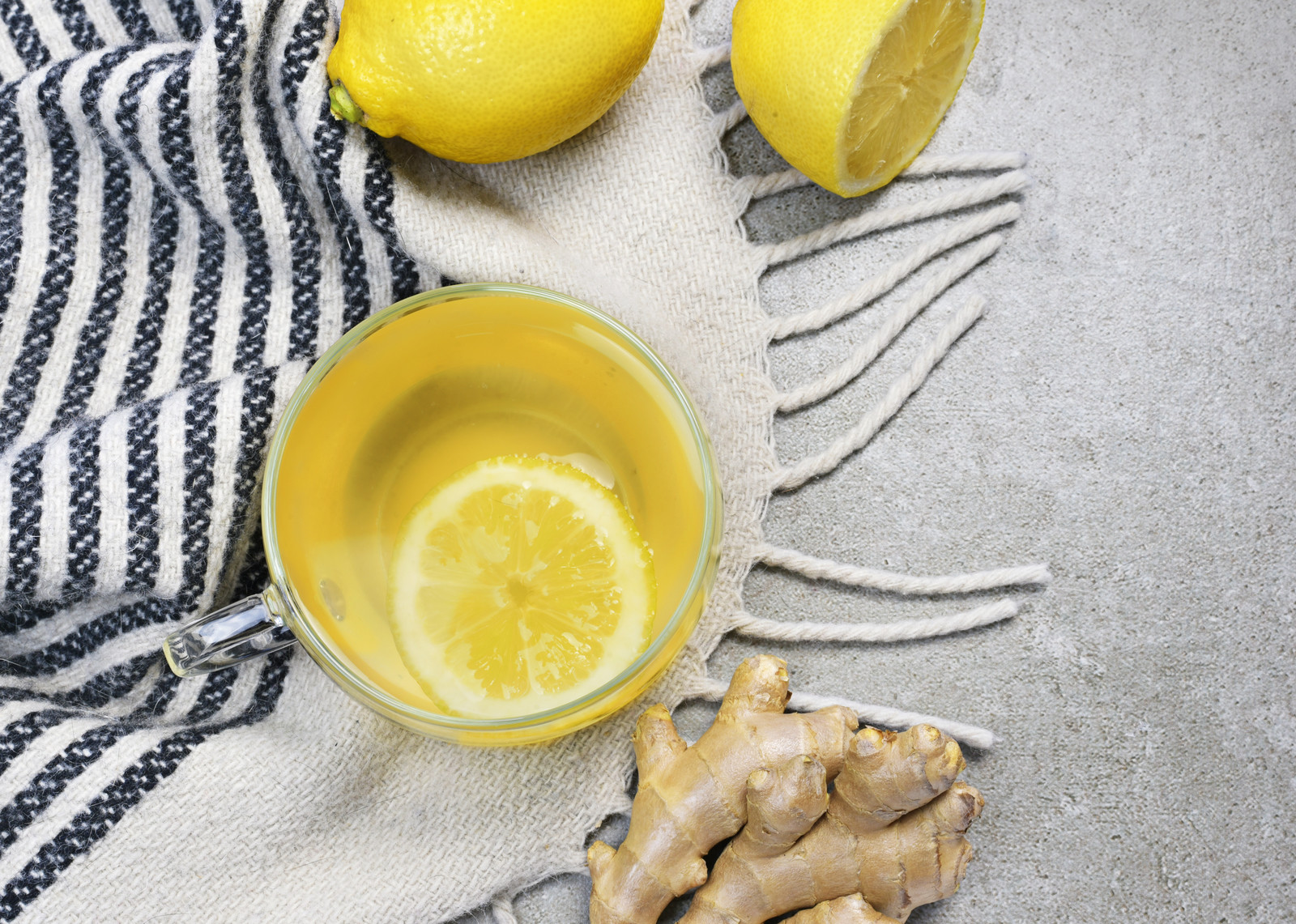Let’s face it, having your period can be a real pain - literally! Cramps, abdominal and body pain, headaches, and even diarrhea can make regular monthly appearances, getting in the way of daily activities, including school and work attendance. These period symptoms have been normalized for so long that even when the pain is debilitating, many sufferers just grin and bear it, assuming it’s just the price to pay for menstruating. But periods don’t have to be painful!
MENSTRUAL CRAMPING 101
Your period is the result of your endometrial lining being shed. It’s a pretty complex affair, involving inflammatory processes mediated by players called prostaglandins and leukotrienes, more blood flow to the endometrium (the tissue that we shed during our period), and increased blood vessel fragility.
This process can sometimes be accompanied by dysmenorrhea, or simply put, period pain. It is, in fact, the most oft-mentioned menstrual complaint according to the American College of Obstetrics and Gynecologists, with an extremely high prevalence globally.
Period pain is typically experienced as discomfort in the lower abdomen and pelvic area within the first few days of a period’s onset, and severity increases with flow. It can be accompanied by heavy bleeding, significant clotting, lower back or leg pain, nausea, vomiting, diarrhea, headaches and migraines, fatigue, and general malaise. The pain can be classified as mild, moderate, or severe, and is correlated with premenstrual syndrome (PMS), with menstruators who experience PMS also having higher rates of dysmenorrhea and vice versa.
Period pain is further classified into two categories: primary and secondary dysmenorrhea.
Primary Dysmenorrhea
Primary dysmenorrhea involves menstrual pain that doesn’t stem from a known underlying pelvic pathology, and typically begins within a year of the onset of menses. Research has shown that this pain can be the result of higher levels of the inflammatory prostaglandins and leukotrienes.
Secondary Dysmenorrhea
Secondary dysmenorrhea involves menstrual pain that stems from an underlying pelvic pathology or medical condition like fibroids, endometriosis, cysts, and infections and can be present early on or develop later in life.
Ch-ch-ch-changes
It’s important to note that the pain may not be the same every month and you may even notice changes in the severity or duration over time. Whether it’s gotten worse or better, and especially if you’ve recognized a clear shift where your periods were once painful, but then improved after something changed or shifted in your life (or vice-versa), keep track of those changes, as they’re important health clues.
Focus on Endometriosis
The most common cause of secondary dysmenorrhea is endometriosis, a disorder where tissue similar to your endometrial lining grows outside of the uterus, often around the ovaries, or in the digestive tract and around the bladder, and in some cases, even around the lungs! The full mechanism of how endometriosis develops and progresses is a bit of a mystery, but we do know that inflammation plays a role.
Endometriosis usually presents with heavy menstrual bleeding and severe dysmenorrhea (both of which have become normalized as an expected part of having a period), although its symptoms can remain fairly silent. Unfortunately, it is highly underdiagnosed because the location of the tissue and the extent of its damage doesn’t always correlate with symptoms, and our current imaging technology cannot reliably detect it which usually results in ultrasounds that appear normal. The current gold standard for diagnosis is laparoscopy (a minimally invasive surgery).
Pinpointing the Cause
Pelvic pain becomes chronic when it lasts for at least six months. It can be constant, intermittent, cyclic, or acyclic. Keeping track of your pain and discussing its length, intensity, duration, and frequency with your healthcare provider is critical to getting the right diagnosis. Also of key importance is tracking the dosage and strength of any painkillers you may use to manage the pain. Since period pain and taking painkillers has been normalized for so long, sometimes we forget that the menstrual pain is only bearable because of pain relief use.
As with any health concern, a comprehensive evaluation of your experiences, family and medical history, and perhaps psychosocial factors, along with bloodwork, a physical examination, and imaging will produce the most accurate diagnosis.
CONVENTIONAL TREATMENTS FOR PERIOD PAIN
The most common treatment for period pain is non-steroidal anti-inflammatory drugs (NSAIDs), and many of us are quick to reach for ibuprofen, naproxen, and mefenamic acid to ease the discomfort. NSAIDs help by easing up the impacts of the inflammatory prostaglandins and can be quite effective, especially when used one-to-two days leading up to your period. NSAIDs can also help alleviate some of the symptoms associated with menstrual pain, like heavy flow and headaches. Unfortunately, frequent, long-term, or heavy use can negatively impact the gastrointestinal tract and liver.
Progestin-releasing oral contraceptives and hormonal IUDs are also commonly used for period pain. Like NSAIDs, they can help with heavy flow and relieve some of the other commonly experienced hormonal issues. But because both oral contraceptives and IUDs include synthetic hormones, adverse effects like disruption of ovulation, mood and body composition changes, low libido, and other symptoms may result.
More severe treatments include ablation or embolization therapy and surgery, including hysterectomy, polyp, fibroid, or ovarian cyst removal, and excision of endometriomas.

SUPPORTING PERIOD PAIN NATURALLY
Before relying too long or too much on chemical or surgical solutions for period pain, it’s worth looking at things that support our overall health, which can trickle down to our menstrual function (and all other functions!). There are known elements that can either aggravate or improve period pain.
Eat Your Veggies
It’s no secret that food choices can directly affect health. Research has shown increasing your intake of fruits and veggies can help decrease PMS symptoms with a direct correlation found between endometriosis and a diet insufficient in produce and omega-3s but excessive in red meat. To give your body its best fighting chance, eat the rainbow to provide it with the antioxidants, vitamins, minerals, and fibre it needs for everything it does, including menstruation. Also consume adequate protein and healthy fats, especially omega-3-rich foods, nuts and seeds, and olive oil, while avoiding a lot of saturated fat (found in red meat, processed and deep-fried foods) and trans fat (naturally found in small amounts in meat, lamb, and dairy).
Drink to That!
Believe it or not, adequate hydration is key to minimizing period pain. Even though it may be our inclination to have that extra cup of coffee or glass of wine (delicious, but not hydrating) when we’re feeling in need of a pick-me-up or a calm-me-down pre-mensturally, increased alcohol and coffee consumption have been associated with a higher severity of pain and elevated PMS symptoms. Make the switch to tea, drink plenty of water, and cut back (or cut out entirely!) the caffeine and alcohol.
Self-Care Bear
Many of us have grown up using the good old hot water bottle to ease those painful cramps, but there are a number of other regular practices to help relieve the pain. Rest, stress management, and sleep are key to good health and mood in general, and when these are lacking, it can contribute to hormonal dysfunction and greater inflammation. Focusing on quality sleep, self-care, and gentle, mindful movements like stretching and yoga (the cat pose is a great one for pelvic discomfort!) can help create balance and decrease period pain.
Poke and Prod!
There are a number of physical modalities that trained experts can administer which can be helpful in relieving a number of menstrual and other health issues. Acupuncture, transcutaneous electrical nerve stimulation (TENS), chiropractic, osteopathy, and massage therapy have all been shown to decrease the severity dysmenorrhea.
A Healthy Dose
There are several helpful herbals and supportive supplements that can alleviate many of the negative symptoms associated with your monthly flow, including pain! As always, make sure to consult with your healthcare provider before implementing any supplements into your routine to make sure that they are right for you and your specific situation.

Ginger
Ginger is an extremely effective herb for period pain. Research shows that oral ginger supplementation is very effective for dysmenorrhea without the side effects of NSAIDs, and can also help with heavy bleeding and nausea. Available in a variety of tasty forms, from fresh to powders, and capsules to teas, ginger is a winner!
For more on the health benefits of ginger, check out Why Ginger is Good For You.
Boswellia
Boswellia is an extract from the resin of the Boswellia serrata tree and has been valued for centuries for its anti-inflammatory effects. It is helpful for decreasing dysmenorrhea as well as heavy menstrual bleeding.
Magnesium
Magnesium is involved in hundreds of biochemical processes in the body and helps both the muscles and nervous system to relax. Often combined with calcium, magnesium is a great support in alleviating menstrual pain and improving sleep.
Omega-3s
Omega-3s are critical in helping to resolve any inflammatory processes that are happening in the body. Not only that, they help improve the structural integrity of cells and support hormones. Supplementation is especially helpful if dietary intake of omega-3s is low.
Vitamin D
Vitamin D deficiency has been associated with a myriad of inflammatory conditions and has been associated with increased pain perception. In order to determine if you are deficient in D, have your levels tested by your healthcare provider and supplement according to their advice.
Remember, period pain doesn’t have to be your lot in life. Keep an open line of communication with your healthcare provider and speak up about something that’s not inevitable—say goodbye to painful periods and hello to a normal, healthy cycle!
You may also enjoy: Natural Remedies to Help with Period Cramps, The Health Benefits of Magnesium for Women, and Treat Premenstrual Symptoms Naturally With Food Swaps.






